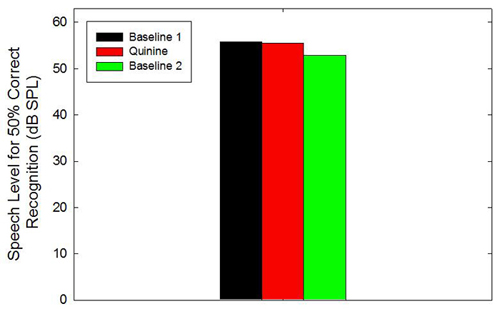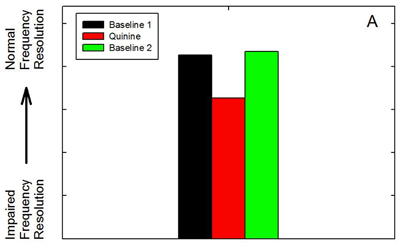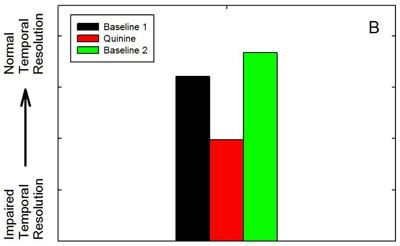Erica J. Williams - ejw@asu.edu
Arizona State University
Tempe, AZ
Sid P. Bacon - spb@asu.edu
Arizona State University
Tempe, AZ
Popular version of paper 4pPP10
Presented Thursday afternoon, May 21, 2009
157th ASA Meeting, Portland, OR
The cochlea of the inner ear contains two types of sensory cells: inner hair cells, which are connected to auditory nerve fibers, and outer hair cells. Quinine causes a temporary (and fully reversible) hearing loss by disrupting the function of the outer hair cells of the cochlea. Quinine can be used non-invasively to investigate the role of outer hair cells in auditory perception. There are approximately 28 million individuals in the United States who experience hearing loss. This information may aid in the refinement of rehabilitative devices, such as hearing aids or cochlear implants, for these hearing-impaired listeners.
Eight normal-hearing listeners between the ages of 19-36 were tested. All subjects had to pass a medical screening in order to participate. All data were collected in Baseline 1-Quinine-Baseline 2 format, which means it was possible to ensure that hearing returned to baseline values (it did for all subjects). Each subject orally ingested between 5.76-11.43 mg/kg body weight of quinine. As shown below, quinine resulted in a mean hearing loss of 10 dB (range = 3-17 dB).

Speech recognition in background noise was measured. There was no change with the quinine-induced hearing loss. This does not necessarily mean that the outer hair cells do not have a role in speech recognition -- it is possible that the task was not sufficiently sensitive to be affected by the quinine.

Finally, we examined how well the ear can resolve frequencies in a complex sound (Panel A) as well as brief changes in sound over time (Panel B). These tasks are important for identification and discrimination of everyday complex sounds. As indicated by the lower values on the bar charts below, listeners performed poorer on both tasks following a quinine-induced hearing loss. Consistent with previous results, this suggests that the outer hair cells are involved in both of these measures.
 |
 |